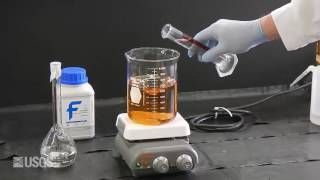New Filter Removes Phosphorus from Waste Water
Published on by Water Network Research, Official research team of The Water Network in Technology
Designed by a small U.S. Geological Survey team, this cost-effective and environmentally friendly water filter system can filter more than 100-thousand gallons per day.
 A tabletop water filter demo designed to remove phosphorus from waste water has in five-years grown into a fully functional water treatment system capable of filtering more than 100-thousand gallons per day.
A tabletop water filter demo designed to remove phosphorus from waste water has in five-years grown into a fully functional water treatment system capable of filtering more than 100-thousand gallons per day.
It uses discarded mining byproducts, called mine drainage ochre, as the primary filtering agent to remove phosphorus from municipal and agricultural waste waters.
Even though phosphorus is a vital nutrient for humans, animals and crops, it can cause problems in watersheds. Dietary phosphorus that animals and humans consume is excreted into waste water, where it can accumulate and feed cyanobacteria, spawning harmful algal blooms.
Harmful algal blooms are an explosion in algae growth, and are fueled by excess nutrients in water like phosphorus and nitrogen. The blooms can cause thick mats to accumulate on the surface of water and can deplete water oxygen concentrations, creating hypoxic dead zones responsible for fish kills and shellfish deaths. Some species of algae can even create a variety of toxins that are harmful to humans and wildlife.
“Harmful algal blooms are a world-wide problem,” said Philip Sibrell, USGS Engineer and lead designer of the filter. “Since phosphorus is one of the main drivers for freshwater blooms, being able to remove it from waste water has some real promise for being able to reduce the ecological impacts arising from harmful algal blooms.”
Researchers have made a lot of progress on the filter system the past few years at the USGS Leetown Science Center, where it was developed. The team is now ready to take the filter out of the lab and put it into public use.
The USGS phosphorus filter is constructed with large tanks that each hold around six hundred pounds of granular mine drainage ochre and uses a gravity flow process where the phosphorus infused water is piped to the top of the tank, allowing it to pass through the porous ochre media, and the filtered water is released out the bottom of the tank.
The simple design of the USGS phosphorus filter, and the fact it uses mine drainage ochre as a filtering agent, keeps the costs down for any water treatment facility that considers using this technology.
In addition to the simple design and economic advantages of using mine drainage ochre byproducts as the filtering agent, the USGS phosphorus filter also has the added bonus of addressing the serious problem of acid mine drainage.
Acid mine drainage occurs when certain minerals in the ground – like pyrite or other sulfide minerals – are disturbed by mining, digging and excavating, exposing these minerals to air and moisture. When this happens, it causes a chemical reaction in the sulfide minerals that creates sulfuric acid and a variety of dissolved metals. This acidic, heavy metals-laced water eventually makes it into local watersheds, altering water pH and introducing new contaminants to ecosystems.
Because of these heavy metals, not all mine drainage ochres are suitable for use as a phosphorus filtering agent because some have the potential to contaminate the treated water. Therefore, the ochres used in the USGS phosphorus filter have been sourced from coal mine drainages, which usually results in lower levels of toxic metals like copper, lead and arsenic. Water that has been treated by these coal mine drainage ochres have been laboratory tested and scientists have confirmed that heavy metals are not present in the filtered water in detectable amounts.
In addition to providing a use for the acid mine drainage byproduct, the systems also has the potential to be another source of phosphorus. During the filtering process, once the mine drainage ochre becomes saturated with phosphorus, the phosphorus can be stripped off of the ochre, regenerating the media to be reused again, and recapturing the phosphorus to be recycled.
Attached link
http://www.youtube.com/embed/1F41EAT8hDsMedia
Taxonomy
- Technology
- Filters
- Filtration Solutions
- Filtration
- Algae
- Technologies